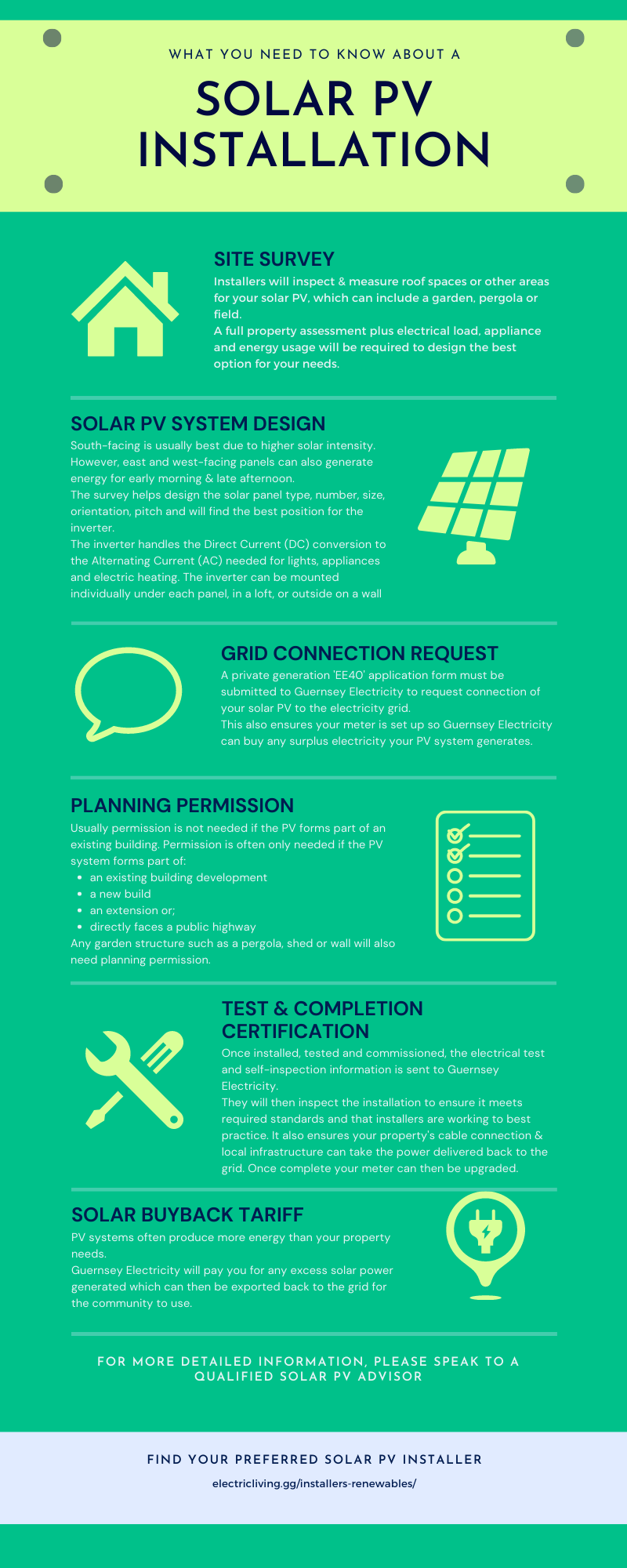Generate your own electricity by harnessing the power of nature from your own home
Site Survey
Installers will inspect and measure roof spaces or other areas for your solar PV, which can include a garden, pergola or field.
A full assessment of your property, its electrical load, your appliances and the energy you use will be required to design and specify the best option for your needs.
Solar PV System Design
South-facing solar PV is generally preferred as it will benefit from higher solar intensity. However East and West-facing panels are also possible as the solar energy can be effectively generated and used within your home during early morning and late afternoon.
The survey helps design and recommend the solar panel type, number, size, orientation, pitch and will find the best position for the inverter. The inverter handles the conversion of the Direct Current (DC) electricity generated by the panels into the Alternating Current (AC) electricity needed for your lights, appliances and electric heating. The inverter can be mounted individually under each panel, in a loft, outhouse, or outside on a wall.
Grid Connection Request
A private generation “EE40” application form must be submitted to Guernsey Electricity to request the connection of your solar PV system to the electricity grid.
This will also ensure that your meter is set up so Guernsey Electricity can buy any surplus electricity your solar PV system generates. This can be done yourself or by your installer.
Planning Permission
Planning permission is usually not required for solar PV installation on existing buildings. Permission will only be needed if the solar PV system forms part of an existing building development, a new build, part of an extension if the panels are directly facing a public highway.
Any garden structure such as a pergola, shed or wall will also require planning permission.
Ground Mounted
Ground mounted systems within the curtilage of a home, less than 2 metres in height, less than 10 square metres, and not located more than 30 metres from the dwelling-house are exempt and do not require planning. If the panels do not fit the aforementioned requirements, planning permission is required.
Fields
- Permission is required if mounted in a field – as a field is designated agricultural land, it’s very unlikely planning permission will be given.
- If solar panels are to take the place of a properly dilapidated vinery, permission is required. Its very likely planning permission will be given. There is a planning policy that encourages this.
- Some fields are allowed to be brought into the curtilage of a domestic property and in that case permission can be sought and very likely given.
Test & Completion Certificate
Once the system is installed, tested and commissioned, the electrical test and self-inspection information will be sent to Guernsey Electricity. Their team will then inspect the installation to ensure it meets the required standards and will then upgrade the meter.
This is a straightforward process ensuring installers are working to best practice, and that your home’s cable connection and the local infrastructure are able to take the power delivered back onto the grid.
Solar buy-back Tariff
Solar PV systems will often produce more energy than you need.
Guernsey Electricity will pay you for any excess solar energy your property generates which will then be exported back to the grid for the community to use.
Please see the Buy-Back tariff for more information.

